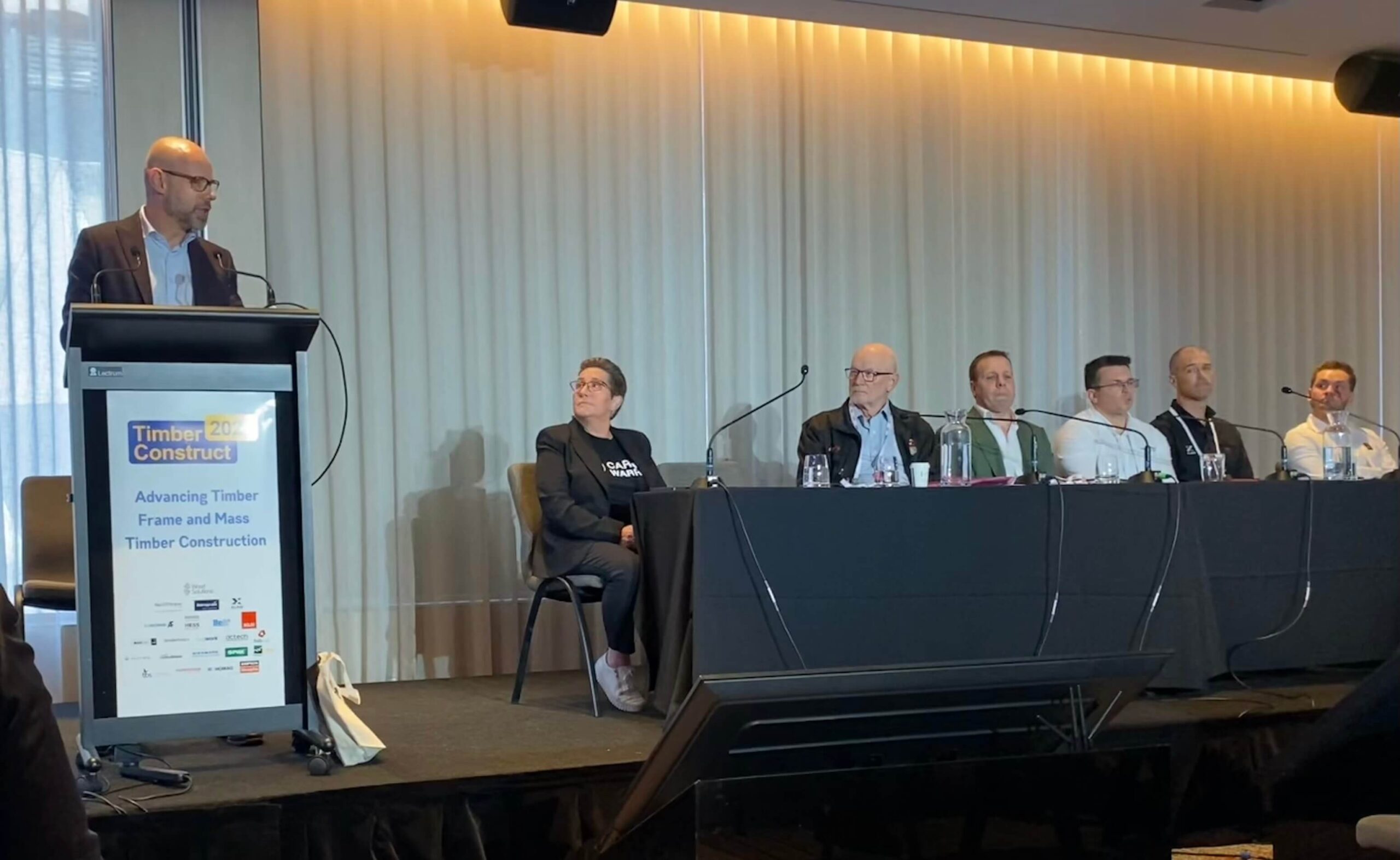The recent Timber Construct Conference, held at Rydges Melbourne on August 12 and 13, was a resounding success, thanks in large part to the exceptional efforts of Andrew Dunn in curating an engaging and informative event. Gathering industry leaders and innovators, the conference served as a platform for discussing the pressing issue of housing shortages and how the timber industry can play a crucial role in addressing this challenge.
I was honoured to chair the 2nd session on Day 1, titled Timber Takes on Housing Shortfall which featured insightful presentations from key figures in the industry, including Jeroen Weimer, Deputy Secretary of Victoria’s Housing Statement Implementation, who laid out the government’s targets for housing in the region. He was followed by Peter Ward from Drouin West Timber and Truss, who highlighted the significance of timber frames and trusses, advocating for an elemental approach to MMC as a viable solution to the housing crisis while maintaining affordability and efficiency.
The panel continued with Tim Newman of Timber Building Systems, Jeremy Church of NeXTimber by Timberlink, Tim McDonald from XLam, and Nathan Benbow from Australian Sustainable Hardwoods, all of whom presented compelling arguments on the potential of mass timber and panelisation to contribute to Australia’s housing needs. These discussions emphasised the necessity for innovative building methods and materials, especially in a landscape where the demand for social and affordable housing continues to outstrip supply.

In my introduction, I pointed out the critical areas where government can make impactful changes to enhance the housing sector. In my opinion, it is hypocritical for all levels of government to expect builders and their suppliers to reduce prices and provide more affordable homes, when up to 40% of the cost of a new build is in taxes. So what taxes are the government going to drop or reduce?
Furthermore, they want houses faster, so again, what are they going to do to streamline the red tap the construction industry needs to go through. For example, it can take over 40 days just to get water permits in some areas. If they want houses cheaper and quicker, then Governments have a role to play as well.
Statistics reveal the extent of timber’s role in housing, with a remarkable 91.1% of houses framed in timber in Victoria, and furthermore approximately 85% of all Australian homes are constructed using offsite prefabricated frames and trusses. In my opinion, there are three essential considerations for the government moving forward:
- Safeguard Australian jobs tied to the construction industry
- Ensure all future housing helps reduce emissions in the built environment by using more renewables, such as timber.
- They must support established businesses who have invested in their businesses to provide structural components for the construction industry.
The Timber Construct Conference not only showcased remarkable advancements within the timber industry but also sparked vital conversations about how to tackle the housing crisis in Australia, which can only help.
Once again, congratulations to Andrew Dunn for a great informative event.

Our Principal Partners



